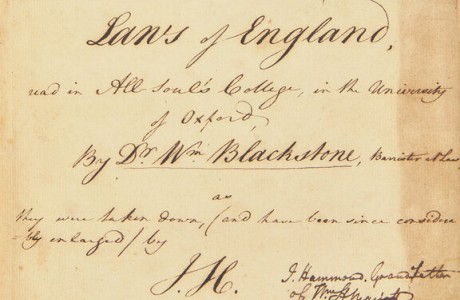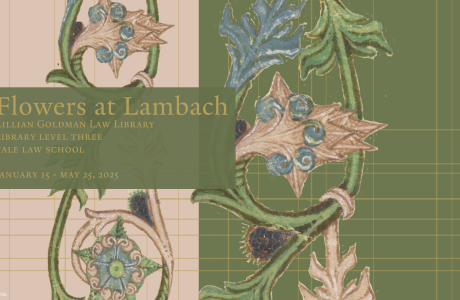Medieval Manuscripts in Law Book Bindings, no. 4

Fragment: Gradual (Italy)
Date: c. 1425-1525

This cover is made from an Italian gradual and features part of the tract (tractus) from the Mass on Holy Saturday, the day before Easter. Tracts replaced the alleluia chants during Lent and other penitential times of the liturgical year. Early tracts consisted of verses from a single psalm, but this later example is based on Matthew 21:33. In its entirety, the tract reads, “Et maceriam circumdedit et circumfodit et plantavit vineam Soreth et hedificavit turrim in medio ejus.” That is, “And he enclosed it with a wall, and surrounded it by a trench; then he planted a vineyard of Sorec grapes, and he built a tower in the middle of it.”
While most of the manuscript fragments in this exhibit were recycled into bindings centuries ago, this one was probably used fairly recently, perhaps early in the 20th century (the Law Library acquired this volume in 1947). It was not uncommon for booksellers to use the large pages from manuscript graduals and other choir books to re-cover volumes as a way to make early books more attractive. In fact, some German monastic libraries had been doing the same thing since the 17th century.
– Notes by Benjamin Yousey-Hindes, Stanford University
POSTSCRIPT: Thanks to Richard Rouse (UCLA) for clarifying the origin of the manuscript fragment, and to William Mahrt (Stanford University) for the following: “The text is an Old Testament canticle (I think from Isaiah), Matthew is only quoting it. Tracts are Psalm texts, but for Holy Saturday, the pieces are on canticles (from other books of the O.T.); they are set to the same kind of melodies as mode-eight tracts of Lent, and so are sometimes called tracts, but are more properly called canticles. Their melodies are the simplest usage of the tract formulae, simpler than the other tracts. The incipit of the canticle is ‘Vinea facta est’.”
Larger versions of this and other images are available from the Medieval binding fragments gallery of the Rare Book Collection’s Flickr site. If you can provide additional information about the manuscript fragment displayed here, you are invited to send an email to .[at]yale.edu>
“Reused, Rebound, Recovered: Medieval Manuscript Fragments in Law Book Bindings” is curated by Benjamin Yousey-Hindes and Mike Widener, and is on display through May 2010 in the Rare Book Exhibition Gallery, Level L2, Lillian Goldman Law Library, Yale Law School.


